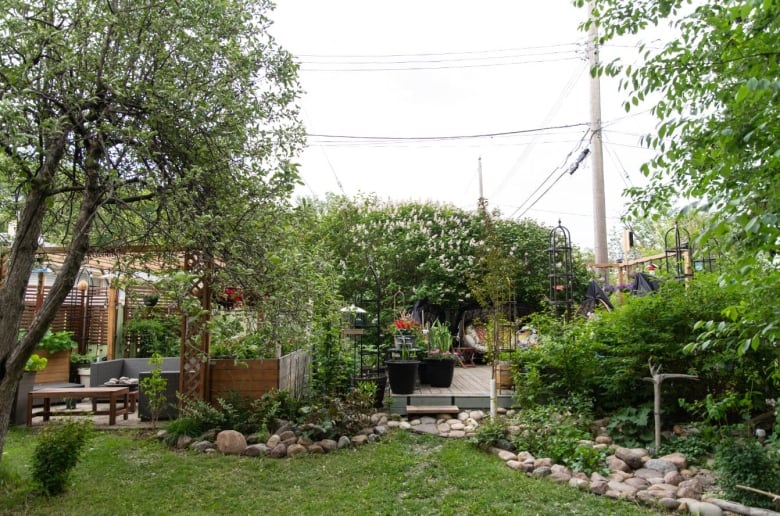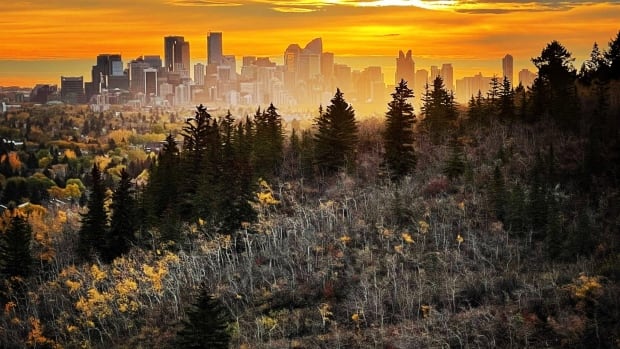The Prairies Climate Change Project is a joint initiative between CBC Edmonton and CBC Saskatchewan that focuses on weather and our changing climate. Meteorologist Christy Climenhaga brings her expert voice to the conversation to help explain weather phenomena and climate change and how they impact everyday life.
Microclimates exist all around us. It may be that side of a city that always seems to be a little warmer, or always gets more snow.
Think about Calgary, with its rain shadow from the mountains and chinook winds, or downtown Vancouver, which generally is warmer and sees less snow than surrounding areas.
Microclimates can range in scale from the urban heat island effect that encompasses an entire downtown, right down to the sides of your yard that are able to grow different things.
One of the most requested stories through our project has been to explain what causes microclimates and why they are important. So, here we go.
Microclimates get complex
When you look at a microclimate, there are a lot of factors at play, but in simple terms, it comes down to temperature and moisture.
“A microclimate actually is the way the energy, the solar energy, is used by the surface,” said Sylvie Leroyer, a research scientist with Environment and Climate Change Canada.
Leroyer said that establishing a microclimate can be complex, including everything from how porous the ground is, how much shade an area gets, the amount of reflection off the ground and changes in elevation.
“A slope effect differs from day to night … in the evening you can have some winds that go down slope when the valley is warmer at the end of the day and so that can have an impact on the microclimate.”
Water bodies will also play a role by moderating temperature and affecting wind patterns.
“During the day you would have wind circulation coming from the water toward the land that is warmer, and in the evening it’s the reverse,” she said.
“All those effects interact together so that at the end it can be quite complex.”
The benefits of microclimates
Microclimates can have a significant effect on the plants and animals within them.
Mhairi McFarlane, director of science and stewardship with Nature Conservancy of Canada, said that microclimates in an ecosystem can be more subtle and smaller scale, but really important.
“There’s microclimates really all around us,” she said. “The microclimate that’s relevant to tiny, tiny little insects in the soil is going to be quite a different scale to a larger animal.”
McFarlane said that microclimates can be as slight as the differences between the top and underside of a leaf.
McFarlane says that differences in microclimates are often more obvious in mountainous or coastal areas.
But even in flatter areas, small undulations can create their own microclimates that help with species diversity.
“You can expect to see different animals and different plants and different places because of these very small variations in moisture and light.”
McFarlane said wetter, shadier areas will host different species than high dry sunny spots on the top of the little hill or even a really slight incline.
And microclimates can evolve, either on their own or with an outside disturbance.
“If you have a natural hollow then water will gather in there and that means that plants for example that have adapted to like having their feet wet will grow there,” she said.
“As they grow, parts of them die. They’ll also drop seeds into the water and soil and that will kind of change that microclimate over time.”
And as we see our climate changing, our microclimates for species are changing too.
“We’re risking losing the natural variation that our native wildlife is adapted to need,” she said.
Microclimates in your own backyard
Every yard will have its own microclimates, and understanding them is crucial to having a successful garden.
That’s according to Helen Shook, a research technician who runs GardenLine, a free help service offered by the University of Saskatchewan.
“In properties there are certain things that affect how warm it is, how windy it is, maybe even the soil temperature,” she said.
It starts with the positioning of a yard. Shook said that generally the south side will be drier, the east is a little gentler, while the west will get hot sun in the summer, and the north is often shadier and windier.
But that’s just the beginning, you also have to consider things like slope as well.

“If you for example live near a river valley or a gully or you’re on an acreage where the land is very sloping, that can make a difference,” she said.
“Low-lying areas tend to be areas where water will accumulate but also frost will sort of settle and be at the bottom of a slope.”
In urban areas, your neighbours will affect your microclimate too.
“In city properties we have neighbours with houses, with garages, we have fences, and all of those things will slow wind speed down,” she said.
“Taller buildings can be a little bit of an issue because depending on how high they are, they can actually funnel wind down and create a very turbulent area.”
Shook said that knowing your garden zone and tracking the microclimates present in your yard will help with a successful garden, but that won’t happen overnight.
“Understanding your microclimate, which can be you know very subtle or it can be you know quite a big difference. I think the way you evaluate that is it’s not an instant thing.”
Our planet is changing. So is our journalism. This story is part of a CBC News initiative entitled “Our Changing Planet” to show and explain the effects of climate change. Keep up with the latest news on our Climate and Environment page.


